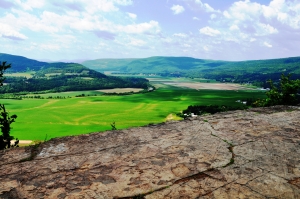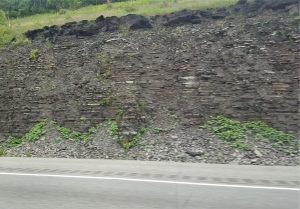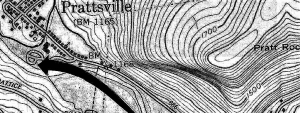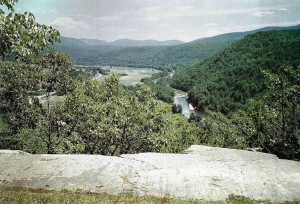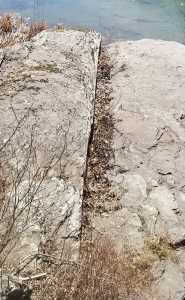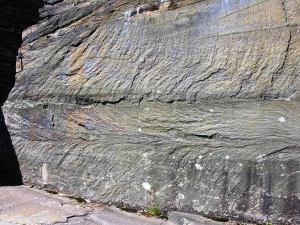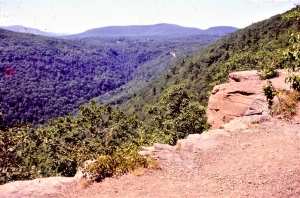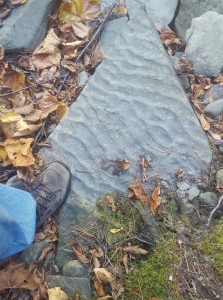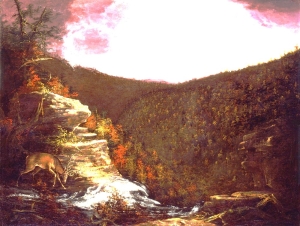A Fossil Soil — May 11, 2018
A fossil soil?
The Catskill Geologists; The Mountain Eagle
Robert and Johanna Titus
The intersection of Rtes. 23 and 32 is one of those locations that we just happen to pass all the time. We drive west on 23 and then turn right onto 32. There is an outcrop on 23, just east of that crossroads. The strata there record the deposits of the outer edge of the old Catskill Delta. We are transported through time back about 385 million years, and find ourselves surrounded by a low, almost flat landscape, covered with a scrubby foliage of very primitive plants. Off, a short distance to the west, is the shore of something called the Catskill Sea. We can’t see those waters but we know they are there. We can smell the saltwater.
We stand on the shore of a sizable river which has flowed across the delta and is headed toward that sea. Its currents flow by us, right to left. The channel bottom is blanketed in soft light-colored sand. All around us is that foliage; it consists of relatively short tree-like plants; we would have to call them shrubs. They reach up to chest level. They are very exotic looking plants; none of them are alive today. To our eyes, they seem very primitive; we can’t guess why at first, but soon we notice that they do not have proper looking leaves, nor any flowers. Their bark is covered with a closely spaced ornamentation of diamond shaped scars. Nothing like them can be seen in the Catskills today.
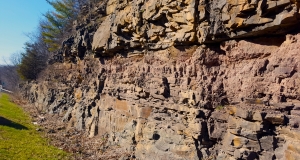
We look down and see that the soil, beneath us, has the shade of a dull brick red. It is warm on this ancient day in this distant past, and that red soil tells us that this is the norm for these times. Not only have we traveled into the distant past but the climate here is tropical. The soil is a tropical one.
And, POOF, our journey into the past is over and we have traveled, in an instant, back to the present. We are again standing along the side of Rte. 23 – and we haven’t moved an inch. We look at that outcropping once again and see, for the first time, just exactly what is in front of us. There is a horizon of red strata. It is cut by vertical structures.
We are looking at a fossil soil. Above it, lies the gray sandstone strata of an old river channel, those other gray sandstones, below, are from another such river channel. But, it is that reddish horizon that captivates us. They document something that we are familiar with. Those vertical structures are shrinkage cracks. They form within soils that are subjects to alternately wet and dry seasonality. During wet seasons of the year, they soak up water and expand. But, during dry seasons, they desiccate and shrink. That’s when the cracks form.
Today, such soils are called vertisols, named after their vertical cracks. Now, we look at this soil profile again, and realize that we have been there. Just a short time ago we had traveled back in time and stood on the shore of one of those two rivers. And we had stood upon that very soil. We reach out and touch the top of that red soil horizon. And then we lean forward and look closely; we are searching for our own footprints. But we can’t find them; time travelers do not leave footprints in the past.
Contact the authors at randjtitus@prodigy.net. Join their facebook page “The Catskill Geologist.” Read their blogs at “thecatskillgeologist.com.”

